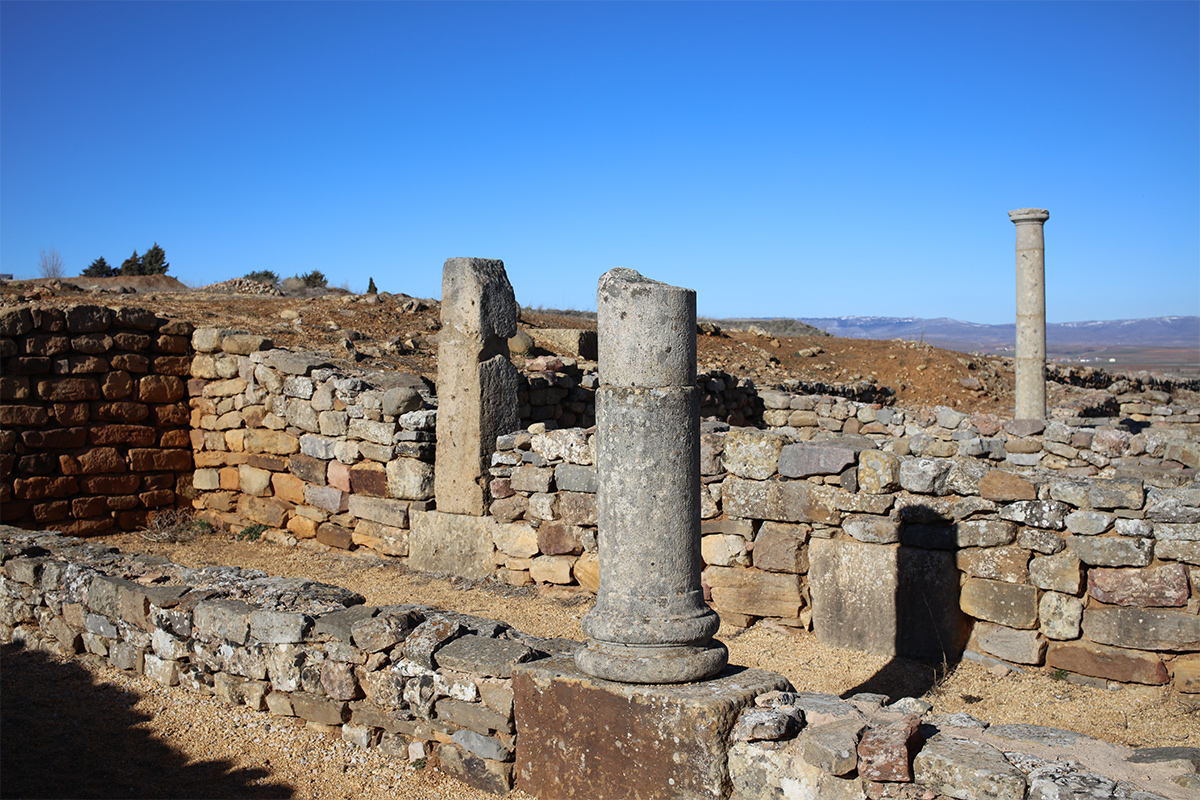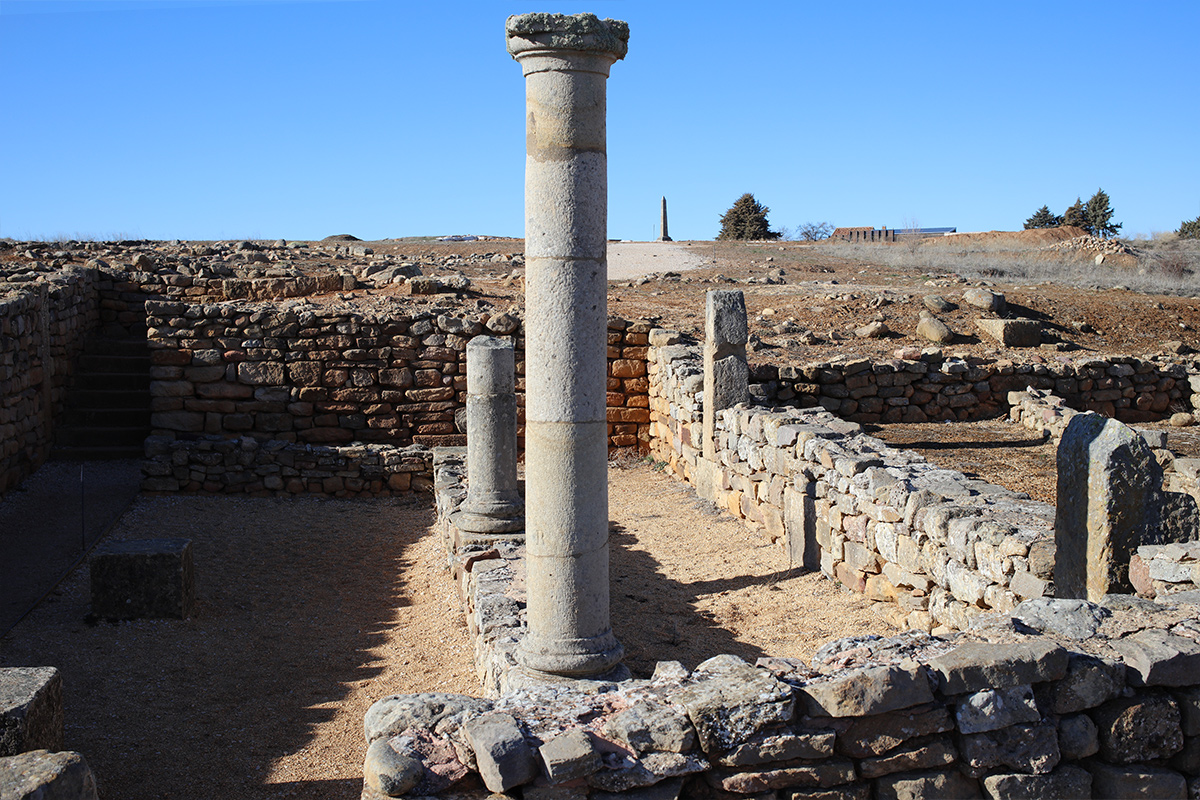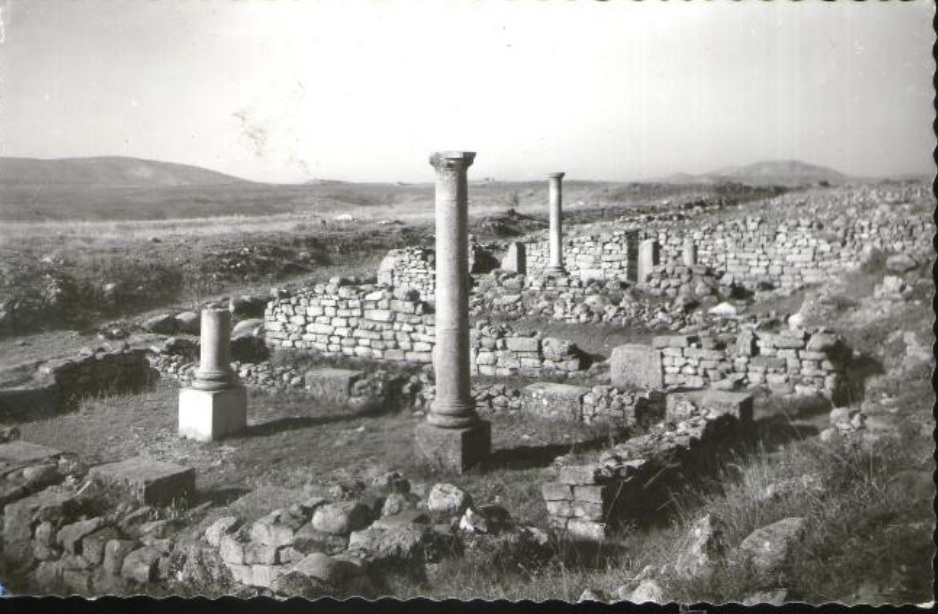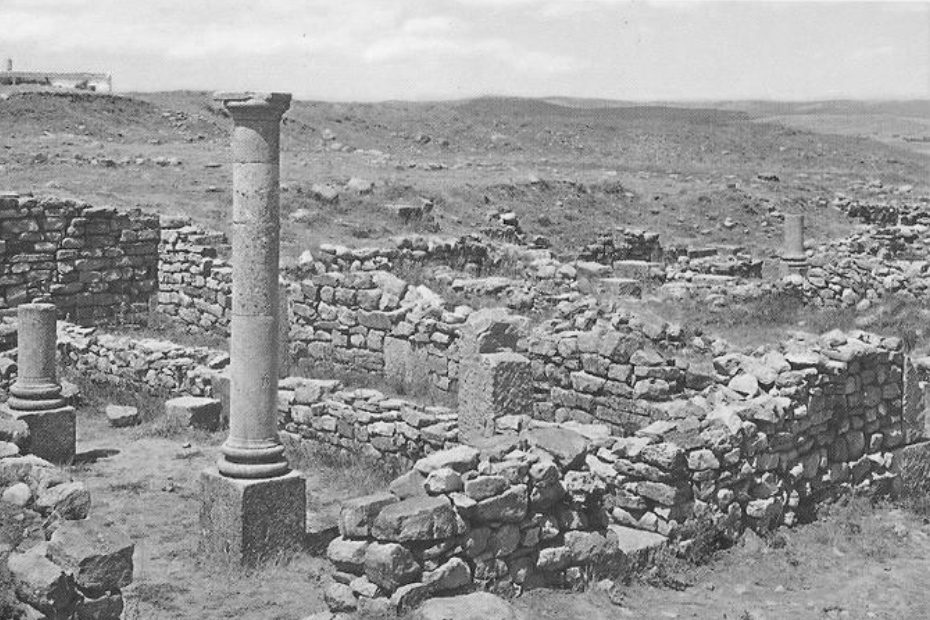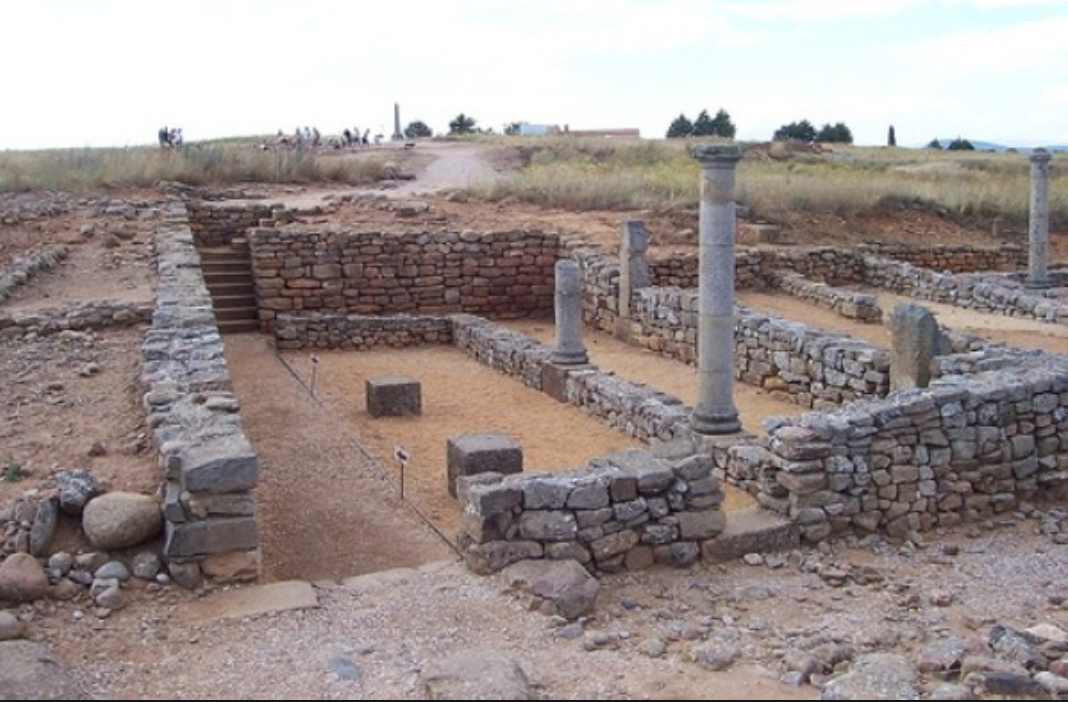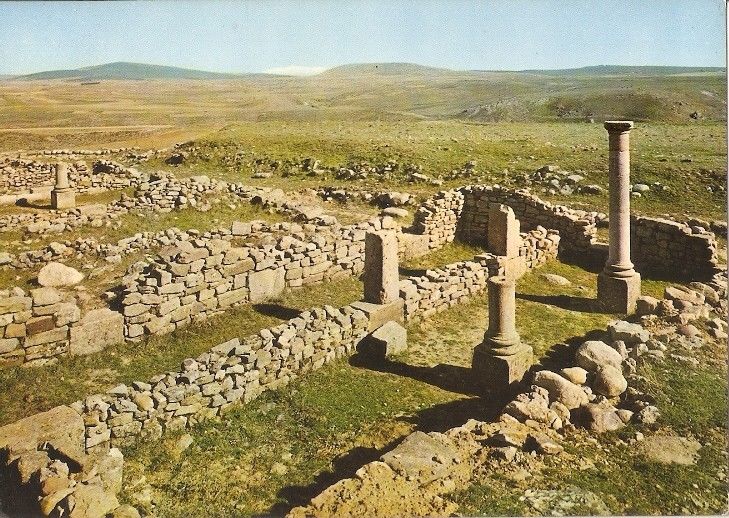Chapter VIII
Numantia: Municipium in the Flavian Era
It was at a later time, in the Flavian era, that the city was granted its ius Latii (Latin Rights) and the status of municipium, boosting the population thereafter. The city sprawled into the western part of the meseta, which had remained unoccupied and especially the whole southern era. Monuments now began to spring up; typical Roman public buildings were built: a commemorative arch at the city entrance; a public building with an arcaded courtyard, in all likelihood the Curia; two baths, one for men and one for women; plus an in antis temple along one of the main streets.
The city, however, did not shed all its native qualities. Most of the houses kept their thatched roofs, eschewing the Roman tegula and imbrex tiles. That said, the living space was completely transformed as compared with the Celtiberian city: new, bigger and functionally compartmented quadrangular spaces were brought in. As from that moment Numantia became economically and politically part of the Roman Empire. The concentration of great farming estates favoured productive specialisation; this led to significant changes in the native structures of dependency and personal relations.
Gallery of chapter images
go on >>>Epilogue: the Numantia of the Numantias
Bibliographical references
- Dietz, Christian, Gianluca Catanzariti, Sergio Quintero y Alfredo Jimeno Martínez (2014). “Roman amber identified as Siegburgite”, Archaeological and Anthropological Sciences, 6, 63 (marzo 2014). DOI: 10.1007/s12520-013-0129-4.
- Jimeno Martínez, Alfredo, Antonio Chaín Galán y Raquel Liceras (2016). “Nueva interpretación de la ciudad romana de Numancia”, en Congreso de Ciudades Romanas del Valle del Duero, Museo de Segovia, Segovia.
